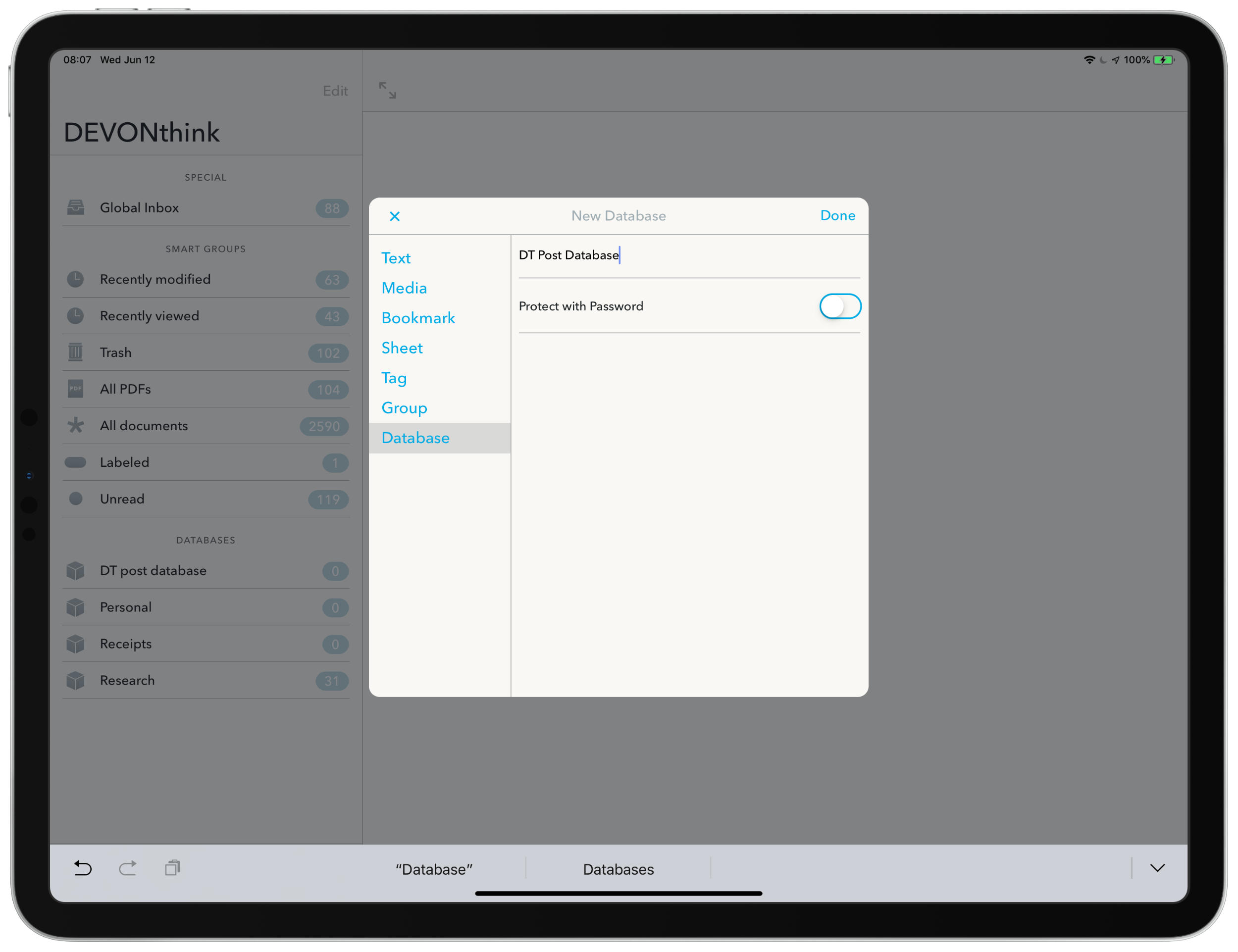

I have Hazel monitoring about a dozen folders on my Mac, but my Downloads Folder keeps Hazel the busiest. Hazel can even peek at the content of files and "recognize" what's inside. Hazel monitors folders on my computer and acts on individual files according to rules I create.

Once matched, Hazel sends the file to Bookends. Hazel recognizes any manuscripts saved to my Downloads Folder. I honestly could not do the academic side of my job without this software. Scrivener - my workhorse for long writing (grants and manuscripts). Ulysses and Bear - for short document writing (e.g. OmniOutliner - Used to outline manuscripts and ultimately to export outline to Scrivener in OPML format
Devonthink to go tags archive#
The Archive - for Zettelkasten management ( What the heck is Zettelkasten?) I also use Bookends on iOS.ĭevonthink 3 - to follow RSS feeds of journals, for research and capture my annotations and also to search through annotations.ĭEVONthink To Go - used to search for information on the go. Highlights - to extract annotations from all my scholarly information.īookends -powerful bibliographic management for my Mac. OmniFocus - Where I store the manuscripts I can't immediately retrieve-for batch retrieval at a later time. Read by QxMD - "Flipboard for scholarly information." How I'm finding the majority of new literature lately (blog entry- Keeping Current with Bookends and QxMD Read)
Devonthink to go tags pdf#
Hazel - Runs in the background on my Mac to automatically add PDF manuscripts to Bookends.ĭropbox - the location of my Scrivener and Devonthink files.ĭrafts - Used for capturing ideas and anything else that comes to mind ( see this entry, and this one) LaunchBar 6 - Used for many functions including extracting and searching for references found in manuscripts, saving annotations, launching apps, etc. I've included links to past articles to show how I've set up my infrastructure. Finally, I'll take you through the writing process, from concept to manuscript/grant submission. Then, I'll go over extracting information. After that, I'll write about how I read and synthesize the information to help with sense-making. I'll then cover how I collect information. I'll start with the "meta" infrastructure programs that make the whole workflow run, including the set-up. Some criticize my workflow for its complexity, but I can assure you that it is amazingly functional once set up. I thought I'd share what I'm currently doing. My workflow has changed substantially over the last several years. One of the most popular entries on WIPPP has been my 2015 Writing Workflow.


 0 kommentar(er)
0 kommentar(er)
